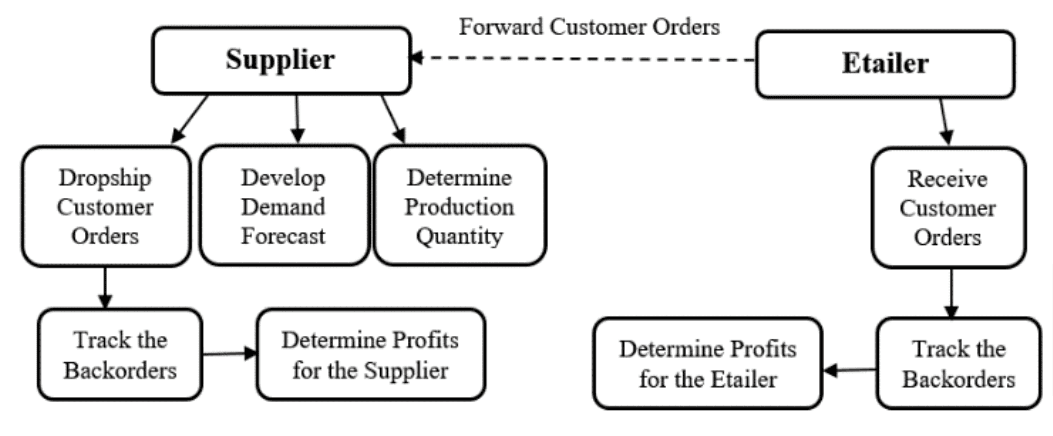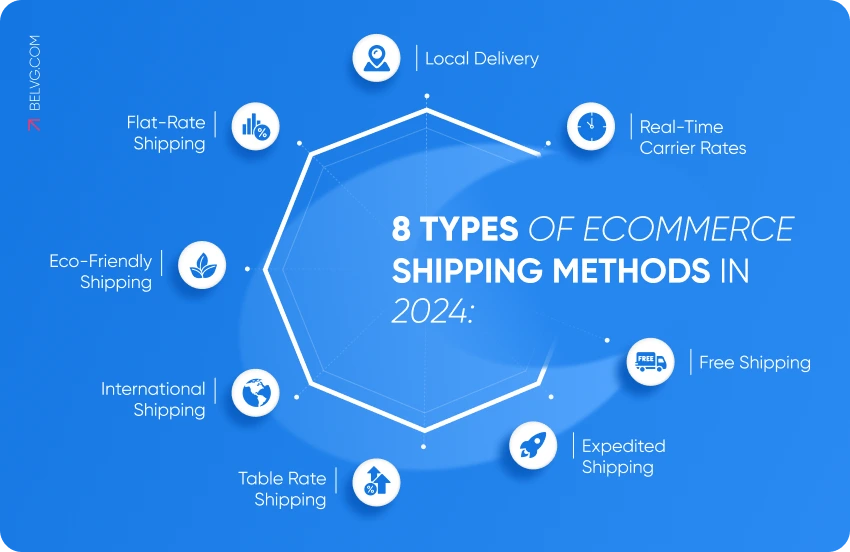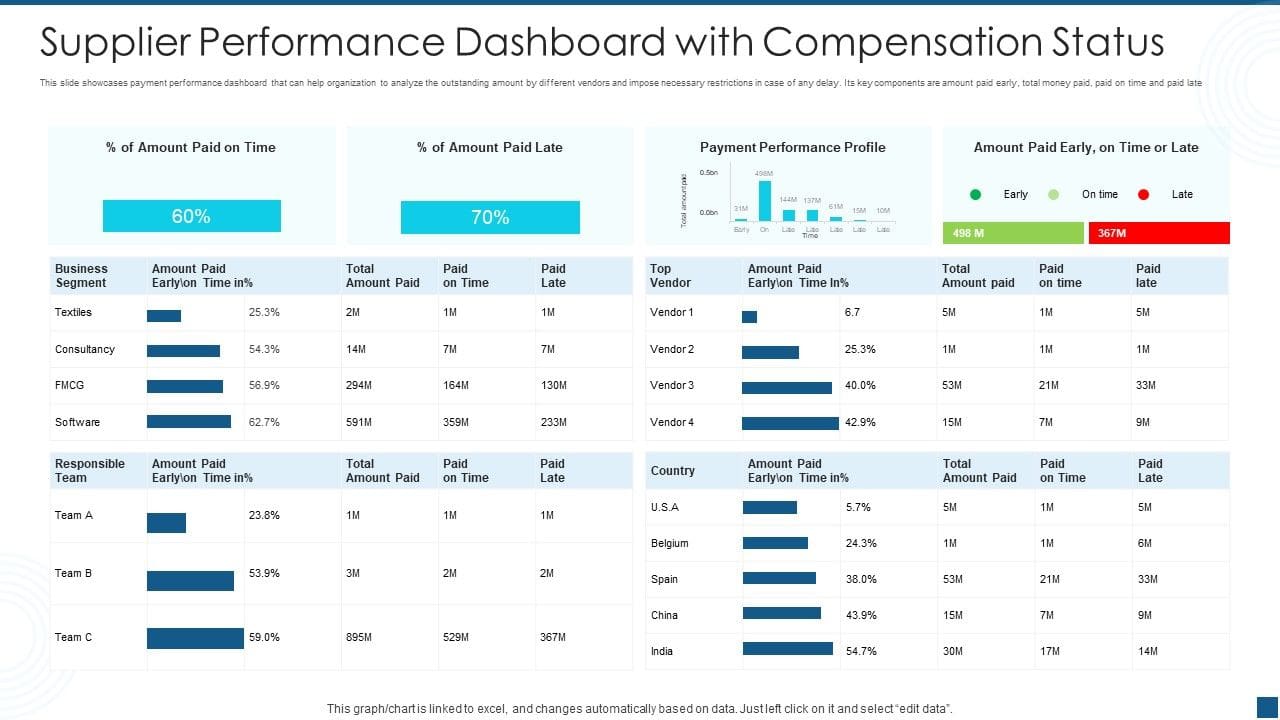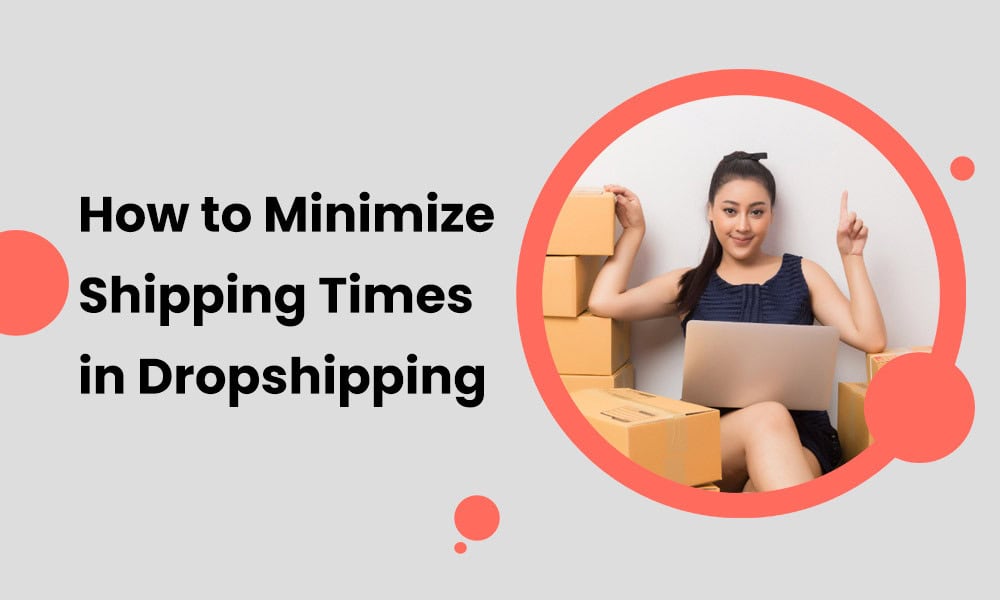Dropshipping is not exactly the speediest process. Although it varies, shipping can take anywhere from 12 to 60 days, depending on what you’re shipping and where. That said, fast shipping is optimal for customer satisfaction, so how do you keep your customers happy?
That’s simple. You must be willing and ready to implement successful measures to abridge your shipping times.
Okay, I recognize it’s not simple, especially when other parties are involved, but it’s worth doing. In this blog post, you’ll learn how to minimize shipping times in dropshipping through strategies, automation, management, and more.
Table of Contents
Key Takeaways
- Minimizing dropshipping shipping times is doable by selecting local suppliers, expanding to alternative shipping methods, and using advanced order processing software.
- Customer communication remains critical throughout the shipping process, and that goes for whether your order arrives in two days or two weeks.
- Once you find a shipping method that works, continue to evaluate it and improve it if possible.
Understanding Shipping Dynamics in Dropshipping
Let’s start by reviewing dropshipping basics, including how shipping orders work.
Essentially, you list products for sale on your website but don’t stock them. Instead, a supplier stocks the products (or the ingredients and materials to make the product) in their warehouse.
When an order comes through, you alert them, and they’ll pick up, pack, and ship it.

It sounds easy enough, but it’s not always exactly that. Multiple factors impact dropshipping shipping speeds, including the following.
Supply chain health
The state of the supply chain is the factor in which everyone has the least control. Often, disruptions start in one country and quickly affect several others. Crises on a countrywide or worldwide scale are examples of what could halt the supply chain, such as the COVID-19 pandemic.
Holidays
Dropshipping businesses take off for holidays just as you and I do.
Shippers do the same, so even if your order was already sent out, it won’t make much progress in the days leading up to and after a holiday.
Shipping method
There’s no overnight delivery with dropshipped orders, but there are still different shipping priorities.
A higher-priority order will receive the lion’s share of attention to reach the customer longer, whereas an order without priority can sit around longer.

Customs
If an order travels internationally, it will also take longer to arrive.
The order must pass through customs and receive clearance, which can also be a time-consuming process that further delays order arrival.
Supplier proximity
When a dropshipper and supplier operate closer to one another, the order doesn’t have to go as far as it does if the two parties are halfway around the country or the world. This can speed up dropshipping order arrival by at least several days, possibly more.
Controlling these circumstances as much as you’re able is prudent. If you become known for your extra-slow shipping times, it can tank your business reputation. Customers will have a poor experience, leaving negative reviews and dissuading others from buying your products.
Read also: The Future of Dropshipping — Emerging Trends & Expert Predictions for the Next Decade
Strategies to Minimize Shipping Times
I won’t leave you in suspense, as I’m sure you’re eager to know how to shorten your shipping times under the dropshipping model. Here are the best strategies.
Choose suppliers with strategically located warehouses
The closer the supplier is to your business headquarters, the quicker the order will ship. When seeking suppliers, their warehouse locations should be one of the top factors.
Even if a supplier checks all the other boxes for what you’re looking for, your dropshipping business will continually lose business (and customers) if you choose a supplier too far away.
Create a plan for excess inventory
Excess inventory might not seem like a problem initially, especially if your dropshipping business is used to being hampered by shortages, but it is not that great. The additional warehouse space the excess orders take up can prevent your supplier from accommodating as many new, incoming orders or at least getting to them as quickly.
If you don’t already have an inventory management system, it’s time to create one. It will ensure your supplier carries only the required stock and leaves warehouse space open to handle other orders.
Use domestic suppliers
Domestic suppliers are more inexpensive and usually offer superior inventory quality control and the flexibility your dropshipping business needs at this game stage.
A few international suppliers are okay, but most of your roster should be domestic.
Set a time limit for addressing backorders
Listen, backorders happen, especially when an item is unexpectedly popular. You might have nothing to do but wait for a little while. However, after enough time elapses, it becomes too long for customers to continue to wait.
When you and the supplier sign a contract, you need a clause that details how long is reasonable for backorders. If the supplier exceeds the limitation, you might legally be allowed to find another supplier to handle the order if that’s what your contract says.
Having several suppliers is better to prevent or at least shorten backorder delays.
Implement advanced order processing software
Order management and processing systems will streamline business processes. You can accept orders from more locations, receive real-time customer data for better customer service, and speed up shipping since you won’t have to rekey the order.
Instead, you can get it to the warehouse so it’s on the way to your customers faster.
Supplier Relations and Management
Building strong relationships with your suppliers ensures you can negotiate when needed and have frank, productive conversations that benefit your customers.
Here are some pointers for strengthening this professional bond:
- Make time to communicate regularly, whether once a week or biweekly. You can have a phone call or video meeting, but try to make it around the same day and time for each meeting so it becomes a part of your schedule.
- Use clear verbiage with one another, passing on the confusing jargon to try and appear smarter.
- Discuss metrics as they go live, especially KPIs pointing in a concerning direction.
Negotiating better shipping terms and conditions
Once you build that rapport with your supplier, asking for things without worrying about destroying the entire relationship is easier. For instance, you can negotiate better shipping conditions and more customer-focused terms.
The goal here is to hasten shipping speeds. If your supplier begins dragging their feet or otherwise seems reticent to improve shipping pace, they may be unable to meet your needs and don’t want to tell you.
This is an excellent time to explore a secondary or even a third supplier besides your first.
Evaluating supplier performance
Ultimately, shipping speed is one facet of a supplier’s performance. Product quality, order accuracy, and order fill rate are other areas to track. If your supplier begins falling behind in one or more of these areas, it might be time to reevaluate your contract.
You might have no choice but to ride out the contract length, in which case, you can choose not to renew when it expires. If a clause allows you to exit the contract while it’s active due to prolonged performance issues, that’s something to consider doing, although not before finding another supplier.

Read also: How to Choose Dropshipping Products to Sell Online in 2024
Technology and Automation in Shipping
No matter where we’re located on this big, wide globe, we only have 24 hours daily. When you and your supplier feel stretched too thin, the efficiency of your supply chain can dwindle, further delaying orders.
Fortunately, you can leverage technology to streamline the shipping process. For instance, automation software is usable for tracking and processing orders. Rather than dedicating valuable time to manually checking on customer orders (which can get overwhelming as your audience grows, you can let an automation workflow take care of the task.
Automation can also assist with other menial yet time-consuming tasks on your dropshipping to-do list, such as:
- Score incoming leads
- Segment customers
- Send initial and follow-up emails to nurture leads and customers
- Post on social media
Wouldn’t having more time back be nice because you don’t have to commit to those tasks? I thought you’d say so!
Automation is just the tip of the iceberg. Investing in eCommerce platforms can make your life easier, from tracking orders to inventory management.
Here are some best practices to follow when uniting shipping solutions with eCommerce platforms:
- Review the available integrations of the shipping/eCommerce software before implementing it into your workflow.
- Always take advantage of demos and free trials that let you use the software without paying. This will help you determine through firsthand experience whether the tool suits you and your team.
- Train your staff on the upcoming changes, including an instructional session on how the software works and how to implement it into existing workflows.
- Be willing to answer follow-up questions about using the new tool as they arise, and consider an expanded training session if there’s an uphill battle learning the software.
Read also: Discover What is Dropshipping and How You Can Do It
Inventory Management Techniques
eCommerce businesses are all about inventory, but as a dropshipping business, you don’t manage inventory the same way as your supplier does. However, their lack of inventory hurts your business, so you must put your heads together to create strategies to maintain inventory that work for you.
While experimenting to discover what’s most effective for you and your supplier will produce the most dividends, I recommend starting with these tactics.
Dropshipping with limited pre-stock items
Although limiting your stock might seem like a surefire way to cap your income, this dropshipping model can be useful if you’ve struggled with inventory. It’s especially valuable if you tend to have more stock than you need.
Dropshipping with limited pre-stock items helps you realize consumer demand in action, allowing you to manage your item stock better going forward.
Utilizing predictive analytics
Today’s technology is simply awesome. It can point you in the right direction using predictive analytics. If your eCommerce software has this capability, please turn it on and use it to its fullest potential.
Predictive analysis will aid you when assessing risk levels, such as introducing a new product outside your wheelhouse. You can also determine how your audience might react, including customer expectations, churn rate and sales rates. You can then amend your inventory accordingly.
The accuracy of predictive analytics can be downright scary, although not in a bad way. Instead, it feels like someone is looking after you, ensuring you make the best business decisions.
ABC analysis
Controlling your inventory is more doable with ABC analyses. This method for classifying your inventory breaks down items into three groups or categories. Items in the A group have the best accuracy rates and are the most controlled. Those in the B category are less controlled and accurate, and those in the C category have the least records and fewest controls.
Sorting your inventory like this makes it easier to budget for inventorying, as you’ll have a record of which items require higher degrees of control and which need less.
FIFO and LIFO
It’s impossible to discuss inventory control without mentioning FIFO and LIFO. These acronyms are first-in, last-out, and last-in, first-out, respectively.
What in the world does that mean? FIFO is an inventorying method that pushes the oldest items out of the warehouse before they risk depreciation that undercuts their value. LIFO is the opposite and assumes that the newest items get sold first. It’s much more difficult for companies to achieve the LIFO model than FIFO, as it requires holding onto more old stock.
Demand forecasting
Before ordering the materials to make 10,000 T-shirts, it might be time for some demand forecasting. As the name suggests, this tech-based system paints a picture of what consumer demand will be for a product in the future.
It’s like looking into a crystal ball; the forward-thinking glimpses it provides can be the difference between catastrophe and business as usual.
Read also: Customer Service for Dropshipping — A Detailed Guide
Alternative Shipping Methods and Logistics Planning
Sometimes, as much as you try, shipping quickly through dropshipping doesn’t work. Rather than stop dropshipping altogether for processing times, it might be time to explore the following alternatives.
Express delivery
When an order can’t wait, there’s express delivery. This form of fulfillment is even faster than ground shipping and can get an order in the customer’s hands in two days or less. Rather than ship products by truck, express delivery often uses air courier.
In some instances, such as when shipping emergency or urgent items, express delivery can even get the order there on the same day.
Pros
- Offering express delivery drives up customer satisfaction. Even if customers don’t have to use it often, they’ll appreciate knowing they have the option.
- Express delivery will clear your supplier’s warehouse more quickly, as stock will move out the door and reach its destination faster.
Cons
- Customers will usually pay a hefty fee for express shipping.
- Your dropshipping business must have an air courier fleet to offer express shipping.
Local carriers
I mentioned the value of proximity between a dropshipping business and a carrier. Now seems like a good time to bring up that point again. Local carriers will make your life easier and help you maintain your reputation and consumer trust, as orders won’t have to go as far as they would if your carrier were out of state.
Local carriers cannot necessarily deliver an order at lightning-quick speed like you get with express delivery, but the delivery pace will certainly be faster than using a carrier located further away.
Pros
- Local carriers are close enough that you can check in and monitor their warehouses personally.
- Building an in-person rapport with the local carrier could strengthen your professional relationship.
Cons
- Shipping through a local courier doesn’t necessarily enhance dropshipping fulfillment speed that much more.
Priority mail
The last alternative to add to your list is priority mail.
This is a moderately slower form of shipping than express, as items will arrive in up to three business days. Still, because your order is deemed a priority (and the customer pays more in shipping), it will move through faster than a standard order.
Pros
- Priority mail may have built-in insurance protecting against transit damage or loss.
- Shipping speeds are faster than standard mail.
Cons
- Even though your order is a “priority,” the delivery range is only an estimate and not always a reality.
Read also: Dropshipping Affiliate Marketing 101: A Step-by-Step Guide
Enhancing Customer Communication
Minimizing your shipping times is an ongoing battle. In the meantime, prioritizing clear, transparent, honest communication with your customers is integral in maintaining and bolstering customer satisfaction.
Your most loyal buyers will appreciate some other facets of customer service.
Providing accurate shipping guidelines with each order
You never know why a customer is buying your product. Perhaps they want it for themselves, or maybe it’s someone’s birthday or anniversary. The best way to treat each order is if it’s time-sensitive.
Even if it isn’t, people still want to receive their orders in a reasonable amount of time, so expediency helps. What also helps is projecting arrival times before a customer checks out. A great example of an eCommerce platform that does this is eBay. You can see an estimated shipping time before adding an item to your cart.
By implementing a similar model, customers can decide whether to purchase an item based on when it will arrive.
Expanding your shipping options
Unfortunately, being upfront with your shipping timeframes may sometimes lead to a loss in sales volume, as some customers will decide they don’t want to or cannot wait that long and will take their services elsewhere.
This is when offering those alternative shipping methods discussed above comes in handy. Customers willing to pay a little more can receive their orders faster.
Implementing systems for real-time order updates
Have you ever ordered an item, got a couple of updates about it, and then zilch? Weeks pass, and you wonder if your order will ever arrive.
Don’t add stress to your customers’ lives if you don’t have to. Providing real-time order updates from receiving the customer’s order to when it’s delivered will help them track their products with excitement.
Handling customer complaints and inquiries about shipping times quickly
Even if you make your shipping policy crystal clear on your website, you will inevitably run into customers complaining about your shipping times.
Addressing them promptly and reminding them of your shipping timeframes might smooth things over, but otherwise, all you can do is offer the customer real-time tracking.
Read also: The International Dropshipping Guide for Newbies
Conclusion
Reducing shipping times is the key to success in your dropshipping business, but it’s not always your say when orders will ship out. That said, you have measures you can take to improve shipping speed, even when working with third-party suppliers.
Your dropshipping business should continuously pursue operational excellence to stay competitive in a rapidly evolving eCommerce landscape, and maximizing customer service is one of the most reliable ways to do it.
EngageBay is an all-in-one marketing, sales, and customer support software for small businesses, startups, and solopreneurs. You get email marketing, marketing automation, landing page and email templates, segmentation and personalization, sales pipelines, live chat, and more.
Sign up for free with EngageBay or book a demo with our experts.
Frequently Asked Questions (FAQ)
1. How can I choose the best suppliers for faster shipping in dropshipping?
Select a quality supplier for faster shipping by understanding your goals, researching available options, and interviewing suppliers that interest you, focusing your questions on their shipping speed.
2. What are the most effective shipping methods for dropshipping?
Courier shipping, especially air courier, will ensure your order arrives to the customer promptly.
3. How does warehouse location impact shipping times?
The further the warehouse is from customers and manufacturers, the longer it takes for the order to reach the correct party. This costs you more in terms of customer dissatisfaction, vehicle wear, and fuel costs.
4. What role does technology play in reducing shipping times?
You can use technology throughout your dropshipping business, such as routine task automation, accurate forecasting, helpful performance analytics, real-time shipping status and delivery updates, and clearer communication between your business and other parties.
5. How should I communicate shipping times to my customers?
Publish a clear policy about your average shipping times on your website, mentioning your expedited options if you provide them. You can also share the policy again in the order confirmation and shipping notification emails.
6. Can I offer expedited shipping in a dropshipping model?
Yes, you can do so by offering express shipping. Priority shipping is considered expedited to some degree.
